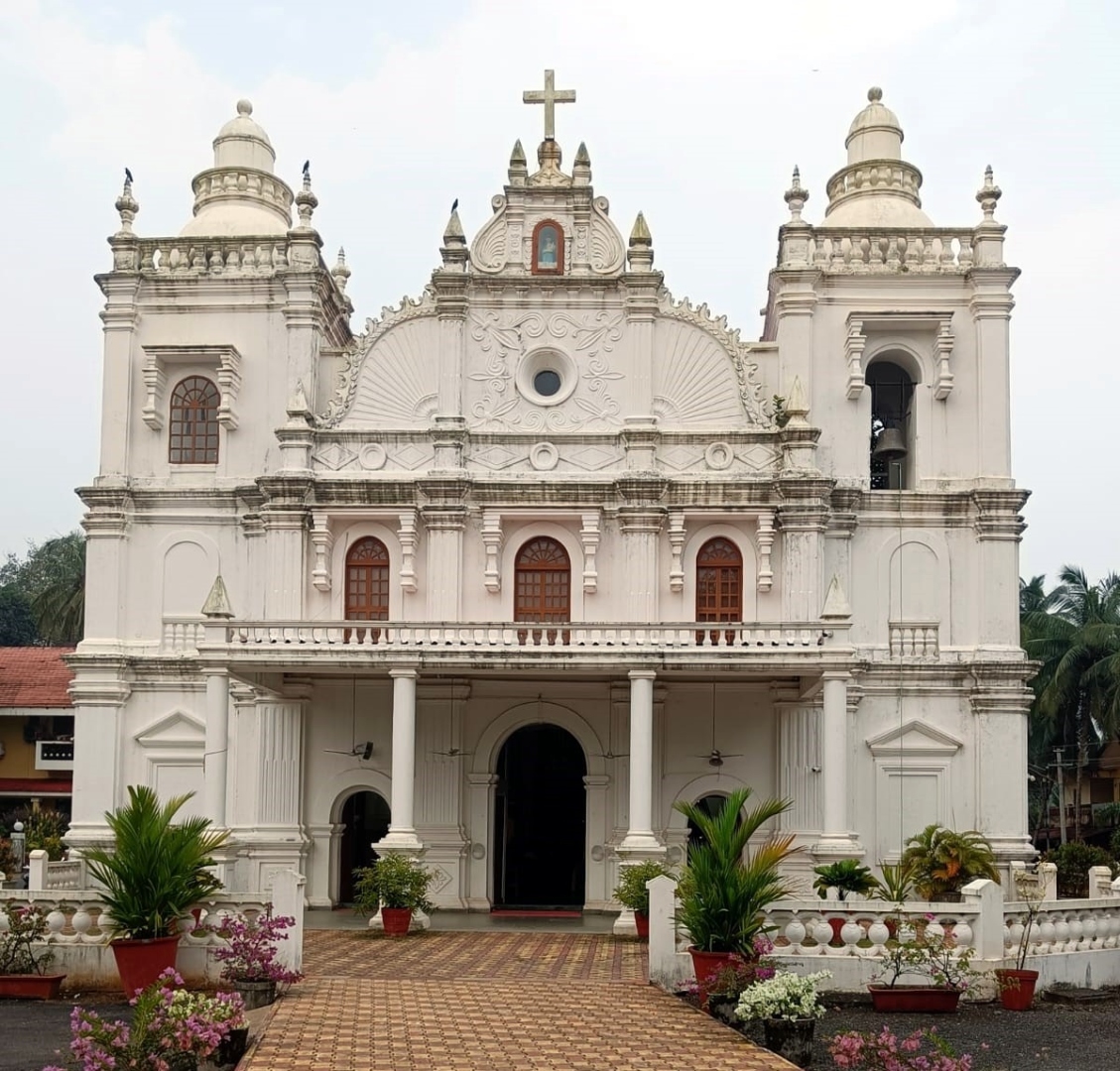
CHRONICLES OF GOAN CHURCHES
The Church at Varca is dedicated to Our Lady of Glory, also called Nossa Senhora da Glora Igreja em Varca, Goa in Portuguese. The parishioners celebrate the feast on the second Sunday of November, which falls on November 10 this year.
THE ORIGIN
The original chapel in Varca, of mud walls with a thatched roof, was constructed by the Jesuits in 1635 and it was elevated to a parish on May 28, the same year. After the old structure was destroyed by fire, the Communidade or the villagers constructed a new church in 1700.
Every ganvkar according to the wards dug out at least one spade full of earth and also deposited at least one stone for the foundation of the church. This was done to symbolise the community effort of the church.
In 1998, a new parochial residence was constructed, which was blessed by Mons Raul Gonsalves, the archbishop of Goa, on April 24, 1998. In front of the church is a monument of Christ the King, which was blessed on May 3, 1933.
THE CHURCH
The Church façade has three sections and two towers, with domes and skylights on top. Above the third section is the image of the patron, Our Lady of Glory. Its architecture is a blend of Indian and Portuguese style. It has a single nave, false transept and tile roof and articulated by semicircular niches. The northern tower has a two-storey gallery built in 1800s or 1900s. The tower to the right has the bell.
THE ALTARS
The middle altar is simple and it has three Greek letters, IHS, symbolising that it was constructed by the Jesuits. At the back is the image of Our Lady of Glory. To the left is the image of St Paul and to the right, St Peter. The other two altars are also simple, the right is dedicated to St Michael and the left to St Anne and below it is the image of St Anthony. Down the church in the wall on the right side is the altar dedicated to the Sacred Heart of Jesus; in the centre is the image of Jesus and to the left that of the Sacred Heart of Mary.
THE ‘OJEAPANCHI IMAZ’
The Church possesses the ‘Ojeapanchi Imaz’, the image of the Body of Christ. There are no historical records of its presence in the Church but just a legend, which says that the image belonged to the old Sancoale church. Many years back the parishioners fled from the place due to the outbreak of a sickness in the village. Later fire destroyed the Church, leaving behind just the front façade intact. Many of its belongings were taken to other churches. Being close to the river, water could have entered the church during the high tide and the coffin that contained image of Jesus got drifted into the Arabian sea. It travelled a long distance till it reached Varca. Fernando Alemao, a ‘cabo do mar,’ – Cape of the sea, while on duty, seeing a box floating, came close to check what it contained. He was surprised to see a statue of Jesus, used for Good Friday.
It was late evening, so placing the coffin on a boat he took it home, intending to take it to the Church the next morning. However, around midnight, all the inmates were awakened with a loud noise and the rattling of the house. They entered the room that contained the coffin only to see it with incense and the candles lit. They took the coffin to the church the next morning and narrated the incident. From that day, the image got its name.
The image is venerated twice a year, on Good Friday and on November 27; this day to commemorate the day when in 1636 the image of Christ on the cross was found shedding tears in Santa Monica convent. People from afar flock to the Church to venerate it. Many miracles have been performed by the image.
(The writer is Superior at Casa Professa, Basilica of Bom Jesus in Old Goa.)